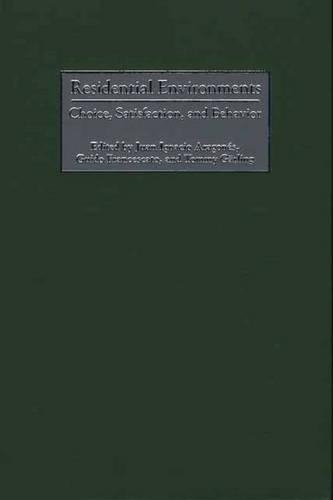
Residential Environments: Choice, Satisfaction, and Behavior
(Hardback)
Publishing Details
Residential Environments: Choice, Satisfaction, and Behavior
By (Author) Juan I. Aragones
Edited by Guido Francescato
Edited by Tommy Grling
Bloomsbury Publishing PLC
Praeger Publishers Inc
30th November 2001
United States
Classifications
Tertiary Education
Non Fiction
Social groups, communities and identities
Social, group or collective psychology
307.336
Physical Properties
Hardback
280
Description
Housing fulfills a basic human need for shelter. It protects us from the weather and from hostile intruders. Often it is an expression of personal identity and social status. A home is a major personal financial investment and housing is an important part of the economy. The home is also invested with profound psychological and social meaning. It helps meet our needs to feel rooted and to belong. It is a center of privacy, a refuge from the world, and at the same time the place where we interact with our family, friends, and acquaintances. As such the home is an important factor in personal and social development, particularly in childhood. Because of the complex role of housing in human life, residential environments are an important area of study in a wide variety of fields, including anthropology, architecture, economics, environmental design, geography, psychology, and sociology. The dwelling is the nucleus around which the discourse about residential environments is articulated, but it is not its only component. Residential environments also involve other elements such as the neighborhood, neighbors, and the larger urban community. This multidisciplinary study of residential environments conveys the complex nature of people's experiences with their residences, neighborhoods, and communities.
Author Bio
JUAN IGNACIO ARAGONES is Lecturer in Social Psychology, Complutense University of Madrid, Spain. GUIDO FRANCESCATO is Professor, School of Architecture, University of Maryland. TOMMY GARLING is Professor of Psychology, Goteburg University, Sweden.
